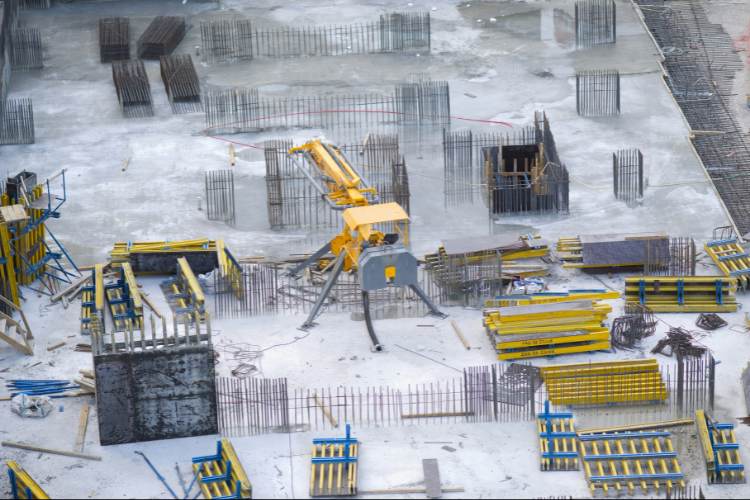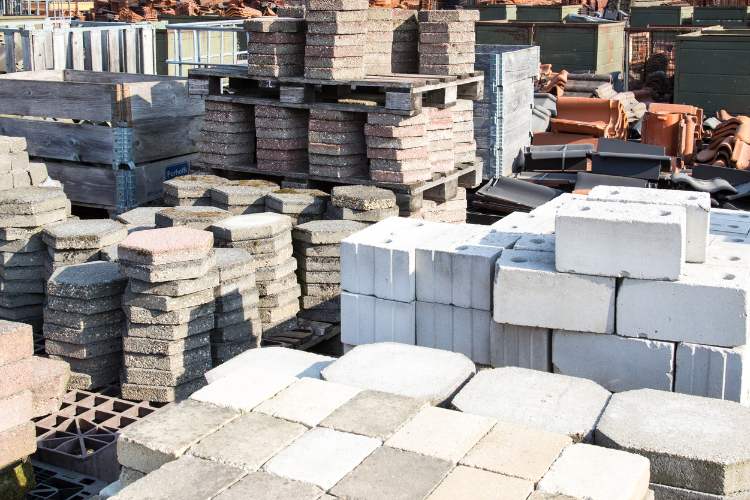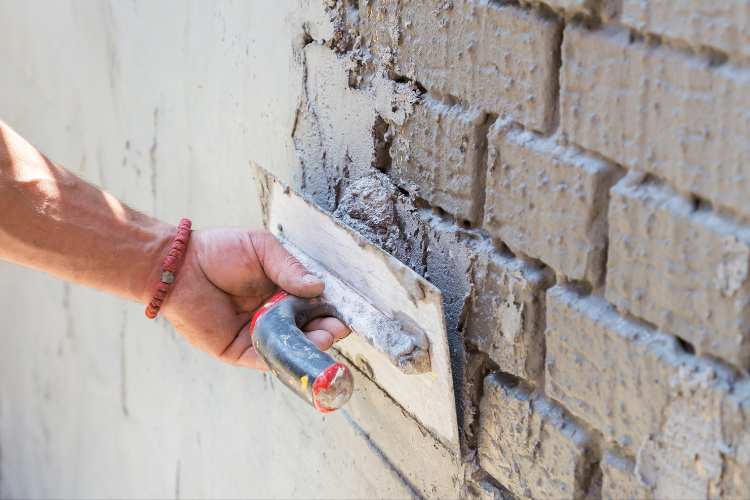Concrete testing is critical to ensure the safety and longevity of buildings and structures. For concrete contractors, testing procedures can save you time and money. This guide will help you learn about the various concrete testing methods and best practices.
What is concrete testing?
Concrete testing ensures that concrete has been poured, set, and constructed correctly. Testing concrete helps avoid and identify concrete deficiencies that could be detrimental to the structure of your building or structure. Concrete testing is standardized by ASTM International, formerly known as the American Society for Testing and Materials.
Testing fresh concrete
Fresh concrete tests usually are run in conjunction with a set of compressive strength tests (typically compressive strength cylinders). Fresh concrete tests should be done on each truck of ready-mix concrete, or for larger concrete pours the testing can be spaced out at a regular interval. For instance, every three ready-mix trucks are tested. Testing requirements will vary for every project, and the engineer on record will specify or need to be consulted to determine the testing methods required for the project.
ASTM C172 – Sampling Freshly Mixed Concrete
ASTM C172 outlines the best practices for sampling ready-mix concrete. The biggest rule of concrete sampling is that samples should be taken from the ready-mix truck only after 10% of the concrete has been discharged and before 90% of the mix has been discharged. Samples should then be covered to protect against rapid evaporation. As with a normal concrete slab, your freshly mixed samples should be treated with care to prevent cracking and other concrete deficiencies.
ASTM C1064 – The temperature of Freshly Mixed Concrete
Temperature measurements should be taken within 5 minutes of securing the concrete samples as per ASTM C1064. To get accurate readings, the thermometer needs to be placed in enough concrete that it is surrounded by at least three inches on all sides. The thermometer should remain inserted in the concrete for 2 minutes while you conduct other tests on the concrete.
ASTM C143 – Concrete Slump Test
Concrete slump tests can be used for concrete with slumps greater than 1/2 inch and less that 9 inches. Once you have the concrete sample the slump test should be done within five minutes. The concrete slump test is conducted by filling a slump testing cone with 12 inches of concrete and compacting the concrete inside with a ⅝ inch rod. Then the cone is raised releasing the concrete. You measure the amount the concrete slumps by taking the difference between the original 12 inch height and the height of the settled shape the concrete takes after releasing the concrete from the slump testing cone.
ASTM C173 – Air Content of Fresh Concrete by the Pressure Method
When using air-entrained concrete the measurement of air content in the fresh concrete is normally performed using the pressure method, but another method called the volumetric method or roll-o-meter method can also be used. The pressure method is preferred because it is easy to preform and takes only 15 minutes. Once the samples are taken you fill the air-content testing device with ¼ cubic feet of ready-mix concrete and strike the outside of the base with a mallet to eliminate any voids in the concrete.Next you latch the top of the device and fill the air gap between the concrete and the top air meter with water. The meter can then be pressurized, which is generally done using a hand pump. After the pressure is stabilized you can release the pressure from the top of the device, and read the air-void content on the dial. You subtract the aggregate correction factor from the air-void content reading, and that gives you the final value.
ASTM C31 – Making and Curing Concrete Test Specimens in the Field
Concrete test cylinders are one of the most common, and accurate methods of testing concrete from the field. Test cylinders are cast to verify that the specified compressive strength of a concrete slab or structure is achieved. Typically the cylinders are molded using a plastic tube that is 6 inches in diameter and 12 inches tall. For standard concrete pours, the general rule is to make four concrete test cylinders. Two of the cylinders get tested at 7-days to determine the compressive strength, and the other two get tested at 28 days. The cylinders are tested using cylinder break tests, which put the cylinders into a hydraulic press which measures the amount of compression that the cylinders can withstand before breaking. It is important to store and protect the molds in conditions that are adequate for the concrete to properly cure. This will ensure that the tests are accurate and reduce the chances of the concrete having deficiencies.
Compressive Strength Tests
Compressive strength tests are done in conjunction with fresh concrete tests. Concrete test cylinders are the most common compressive strength tests, but there are many strength tests that are available for contractors to use. Make sure that you complete concrete strength tests as specified by a licensed engineer.
ASTM C805 – Rebound Hammer or Schmidt Hammer
The rebound hammer test is done using a spring release mechanism that activates a hammer and drives a plunger into the surface of the concrete. The rebound distance from the hammer to the surface is then measured and given a value between 10 and 100. That measurement is correlated to the concrete’s strength, but the measurement can not be taken accurately unless the rebound hammer is calibrated using cored samples.
ASTM C803 – Penetration Resistance Test
A penetration resistance test uses a testing device that drives a small rod into the surface of the concrete. The force used to break the surface of the concrete, and the depth of the hole is then used to measure the compressive strength. This test is highly influenced by the type of concrete mix used and surface conditions. The measurement can not be taken accurately unless the penetration resistance device is calibrated using multiple core samples.
ASTM C597 – Ultrasonic Pulse Velocity
Ultrasonic pulse velocity tests the velocity of vibrations through a concrete slab. The velocity of the vibrations gives data on the concrete’s elasticity, density, and resistance to stress. The data can then be used to determine the overall strength of the concrete. This test is great because it is one of the few non-destructive concrete testing methods, and can quickly help test for flaws that aren’t visible to the human eye, such as internal cracks and honeycombing.
ASTM C900 – Pullout Test
The pullout test uses a cast-in-place or post-cast rod with a head at the end. The rod is then pulled out using a special instrument that measures the amount of force required to pull the rod out of the concrete, which can then determine the compressive strength of the concrete. This test requires pullout test rods to be placed in multiple locations in order to get accurate readings from different areas in the concrete slab. The testy also causes destruction of concrete which has to be repaired after testing is completed.
ASTM C42 – Drilled Core
Drilled core tests are considered one of the most accurate tests because cores are taken from the concrete slab being tested they cured under the same conditions as the entire slab. Once the core is removed from the slab, it undergoes a compression test in a hydraulic press, which is done in a concrete testing lab. The problem with drilled core testing is that it is incredibly destructive and any cores taken out of the concrete have to be carefully repaired to ensure there is no structural damage.
ASTM C1074 – Wireless Maturity Sensors
Wireless maturity sensors are a relatively new development, but they work based on the principle that concrete strength is directly related to its hydration temperature. Wireless maturity censored are placed on rebar before concrete is poured, and stay in the concrete as it cures. Temperature data is collected by the sensors and sent to a computer or smartphone using a wireless connection. The compressive strength data is updated in real-time and is considered one of the most accurate and reliable measurements of concrete strength. The method does require that you calibrate the sensors for each concrete mix so that you can establish a concrete maturity curve based on cylinder break tests.







